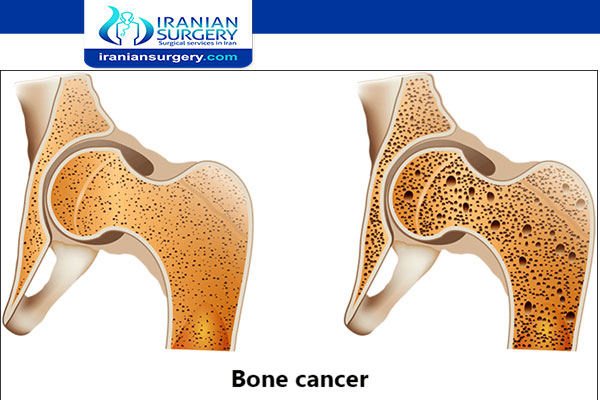Bone cancer causes and symptoms
How can you prevent bone cancer?
Is bone cancer curable?
How long do you live after being diagnosed with bone cancer?
Bone cancer causes
The exact reason why this happens is often not known, but certain things can increase your chance of developing the condition.
The following factors may raise a person’s risk of developing bone cancer:
- Children with familial retinoblastoma, which is a type of eye cancer, have an increased risk of developing osteosarcoma. People with a history of sarcomas in their family, as is seen with Li-Fraumeni syndrome, are also at high risk for osteosarcomas. Researchers are finding genes that are passed from generation to generation that give people a higher risk of developing osteosarcoma than the general population. All of these conditions are rare.
- Previous radiation therapy. People who have had radiation treatment for other conditions have a higher risk of developing bone cancer at the site of the radiation therapy. The majority of radiation therapy-caused sarcomas include angiosarcoma and undifferentiated pleomorphic sarcoma (UPS) of soft tissue or osteosarcoma, but other types may occur.
- Chemotherapy for another cancer.Some drugs used to treat cancer, including alkylating agents and anthracyclines, may increase the risk of developing a secondary cancer, usually osteosarcoma.
- Benign tumors or other bone conditions.Paget’s disease of the bone may lead to osteosarcoma. Other noncancerous bone diseases, such as fibrous dysplasia, may increase the risk of osteosarcoma.
Most bone cancers are not caused by inherited DNA mutations. They’re the result of mutations during the person’s lifetime. These mutations may result from exposure to radiation or cancer-causing chemicals, but most often they occur for no apparent reason. These mutations are present only in the cancer cells, so they cannot be passed on to the person’s children.
Read more about: Stage 4 bone cancer treatment
Read more about: Bone cancer treatment in Iran
Bone cancer symptoms
Bone cancer can affect any bone, but most cases develop in the long bones of the legs or upper arms.
The main symptoms include:
- persistent bone pain that gets worse over time and continues into the night
- swelling and redness (inflammation) over a bone, which can make movement difficult if the affected bone is near a joint
- a noticeable lump over a bone
- a weak bone that breaks (fractures) more easily than normal
Read more about : Pancreatic cancer
Read more about : Prostate Cancer Treatments Pros and Cons
How can you prevent bone cancer?
Different factors cause different types of cancer. Researchers continue to look into what factors cause bone sarcoma, including ways to prevent it. Currently, there is no known way to prevent bone sarcoma.
Early detection offers the best chance for successful treatment, so people with known risk factors are encouraged to visit the doctor regularly and discuss their personal risk for developing bone sarcoma. This includes people with Li-Fraumeni syndrome, retinoblastoma, or other conditions in which the
risk of sarcoma is inherited. Talk with your health care team for more information about your personal risk of cancer. Still, most bone sarcomas occur in people with no known risk factors.
Read more about : Cancer Treatment
Read more about : Orchiectomy surgery for prostate cancer
Is bone cancer curable?
For some people with bone cancer, treatment may remove or destroy the cancer. Completing treatment can be both stressful and exciting. You may be relieved to finish treatment, but find it’s hard not to worry about cancer coming back. This is very common if you’ve had cancer.
For other people, the cancer might never go away completely. Some people may get regular treatment with chemotherapy or targeted therapy or other treatments to try and help keep the cancer in check. Learning to live with cancer that does not go away can be difficult and very stressful.
The prognosis, or outlook, for survival for bone cancer patients depends upon the particular type of cancer and the extent to which it has spread. The overall five-year survival rate for all bone cancers in adults and children is about 70%. Chondrosarcomas in adults have an overall five-year survival rate of about 80%.
How long do you live after being diagnosed with bone cancer?
- almost 85 out of every 100 people (almost 85%) survive their cancer for 1 year or more after diagnosis
- more than 60 out of every 100 people (more than 60%) survive their cancer for 5 years or more after diagnosis
- 55 out of every 100 people (55%) survive their cancer for 10 years or more after diagnosis
Read more about: bone cancer prevention
Read more about: Bone cancer treatment success rate

